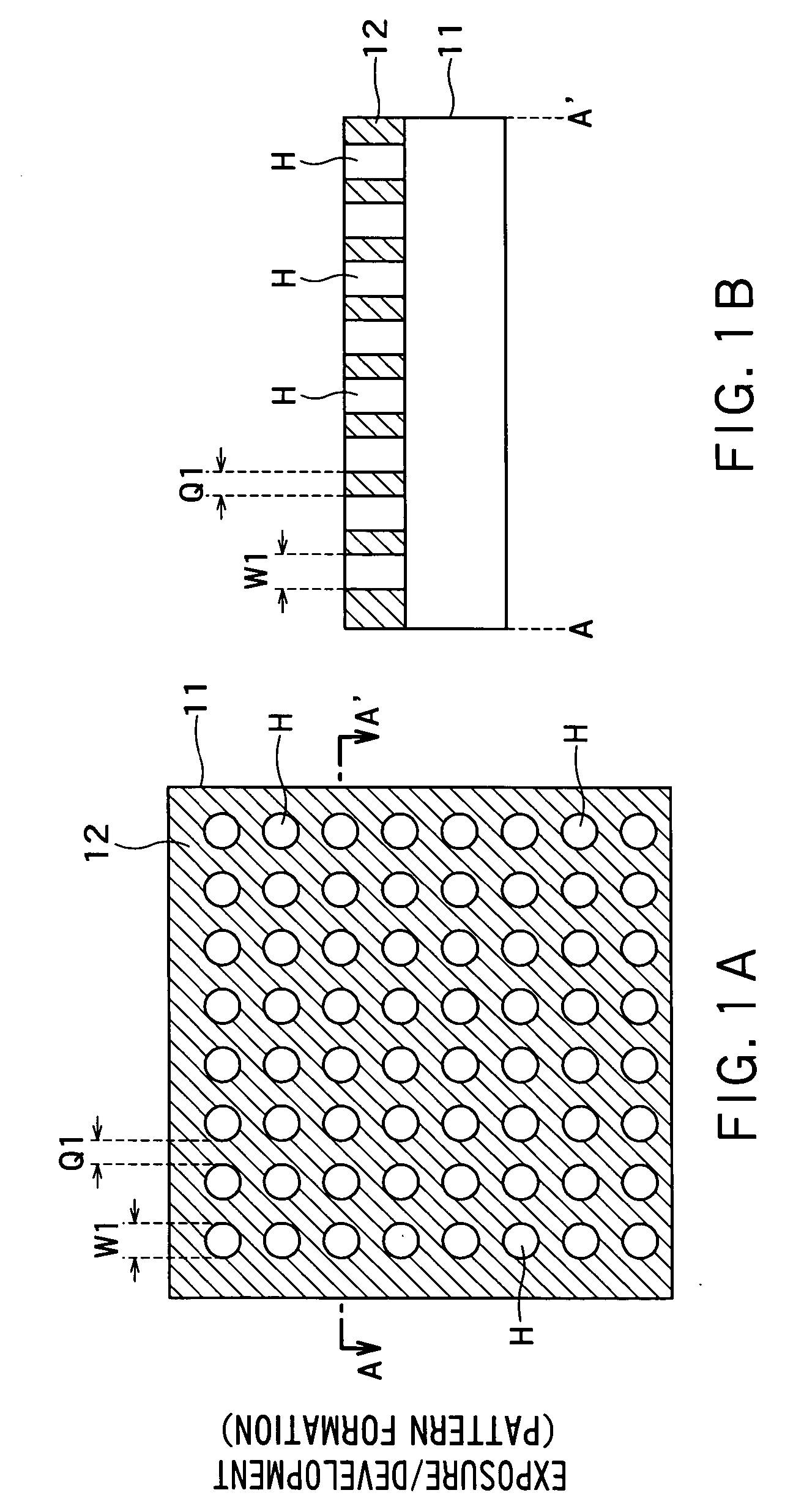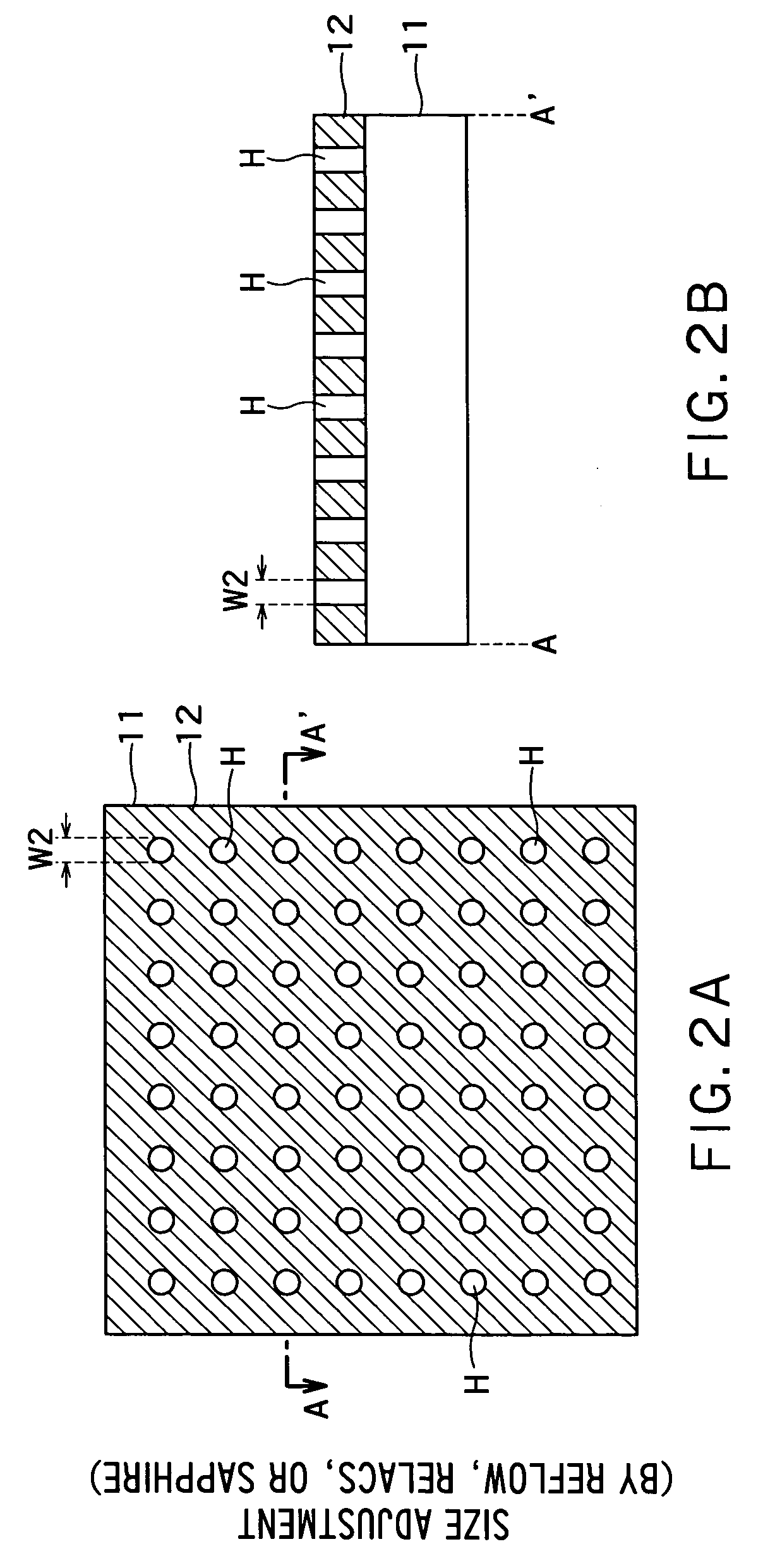Method of forming contact hole and method of manufacturing semiconductor device
a technology of contact hole and manufacturing method, which is applied in the direction of semiconductor/solid-state device details, instruments, photomechanical equipment, etc., can solve the problems of difficult to obtain contact hole patterns at an equal size in the dense part and the less-dense part, and the difficulty of using these processes for the hole formation method, so as to reduce the opening size and reduce the opening size
- Summary
- Abstract
- Description
- Claims
- Application Information
AI Technical Summary
Benefits of technology
Problems solved by technology
Method used
Image
Examples
Embodiment Construction
[0025] An embodiment of the present invention will be described hereinafter with reference to the accompanying drawings.
[0026]FIGS. 5A and 5B are plan views of two photomasks X and Y used in the embodiment of the present invention, respectively.
[0027] As shown in FIG. 5A, the photomask X is constituted so that mask patterns 2 each in a plane circular shape having a diameter of L1 are arranged at a pitch (an interval) P1 in a lattice fashion. The diameter L1 is, for example, 200 nm, and the pitch P1 is, for example, 300 nm. In FIG. 5A, parts surrounded by dotted lines 1a to 1c indicate mask patterns corresponding to finally formed contact holes, respectively, whereas remaining parts indicate dummy mask patterns. Specifically, the part surrounded by the dotted line 1a indicates the mask patterns arranged at high density, and the parts surrounded by the dotted lines 1b and 1c indicate the mask patterns arranged at low density, respectively.
[0028] As shown in FIG. 5B, the photomask Y...
PUM
| Property | Measurement | Unit |
|---|---|---|
| diameter L1 | aaaaa | aaaaa |
| diameter L1 | aaaaa | aaaaa |
| thickness | aaaaa | aaaaa |
Abstract
Description
Claims
Application Information
 Login to View More
Login to View More - R&D
- Intellectual Property
- Life Sciences
- Materials
- Tech Scout
- Unparalleled Data Quality
- Higher Quality Content
- 60% Fewer Hallucinations
Browse by: Latest US Patents, China's latest patents, Technical Efficacy Thesaurus, Application Domain, Technology Topic, Popular Technical Reports.
© 2025 PatSnap. All rights reserved.Legal|Privacy policy|Modern Slavery Act Transparency Statement|Sitemap|About US| Contact US: help@patsnap.com



